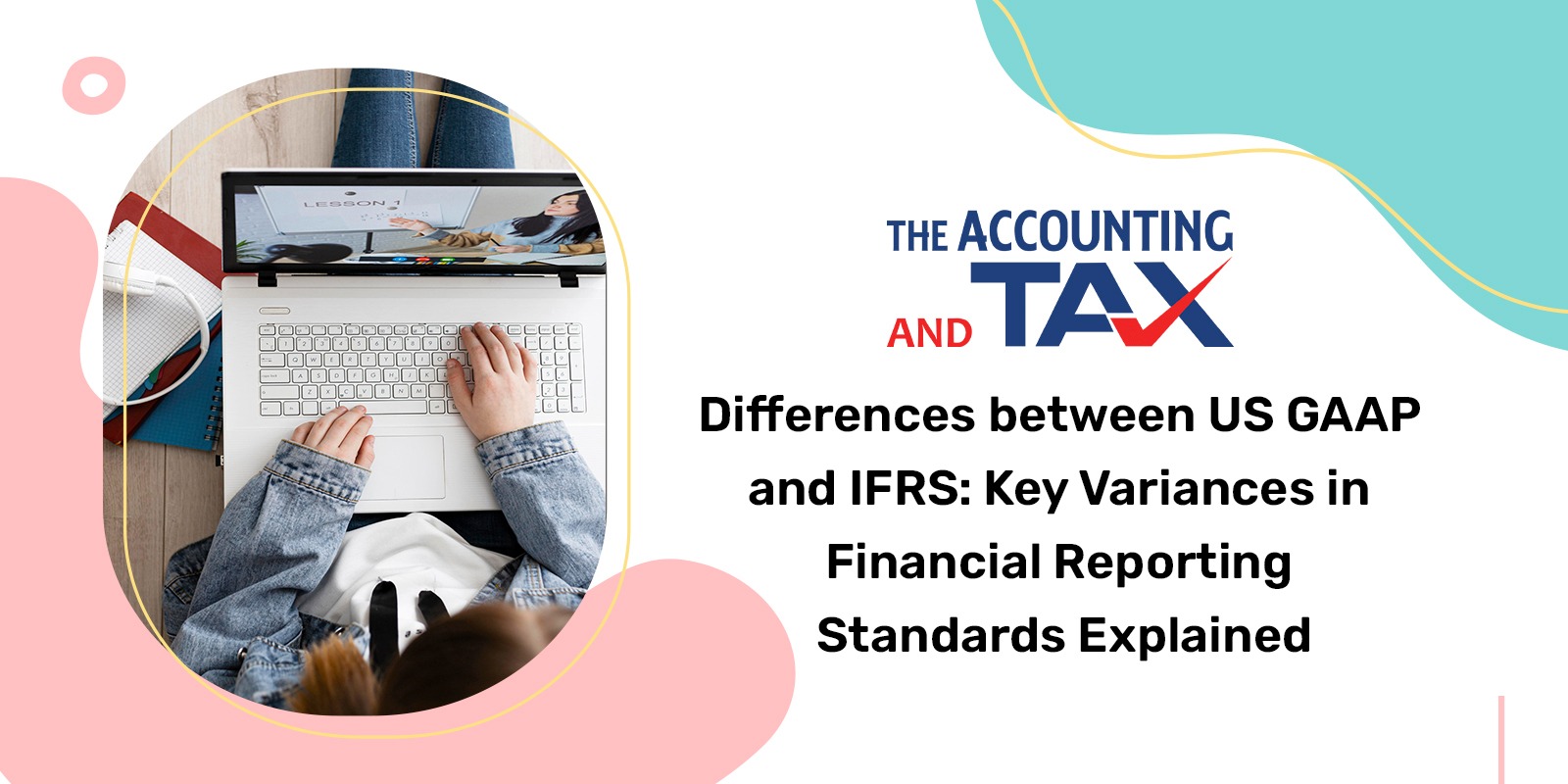
Differences between US GAAP and IFRS: Key Variances in Financial Reporting Standards Explained
Financial experts, investors and regulatory authorities frequently discuss the differences between US GAAP and IFRS. In order to give principles for financial reporting, two widely used sets of accounting standards are US GAAP (Generally Accepted Accounting Principles) and IFRS (International Financial Reporting Standards). Yet, each standard’s methodology and requirements differ significantly from one another.
In this blog post, we’ll explore the key distinction between these two financial reporting standards, along with the significance of comprehending these variances. Also we’ll examine the scope, accounting principles, financial statement presentation, revenue and expense recognition differences.
Scope of US GAAP & IFRS
In this section, we will look at how these two standards differ in their application and adoption. While both standards provide financial reporting guidance, their scope and applicability are vastly different.
Applicability
The application of these two financial reporting standards differ in terms of their scope and requirements. US GAAP is predominantly used in the United States by companies that are registered with the SEC, while IFRS is utilized in many countries worldwide. US GAAP is prescriptive and rules-based. IFRS is principles-based and allows for more interpretation and judgment.
Adoption by Industries and Entities
Various industries and entities adopt IFRS & US GAAP based on their specific requirements. Public companies in the United States primarily use US GAAP, whilst most private and public companies outside the United States use IFRS. Certain industries, such as banking and insurance, may also have unique reporting requirements under both US GAAP and IFRS.
Accounting Principles & Concepts
US GAAP and IFRS both encompass accounting concepts and principles. However, there are key variances. For instance, the measurement of assets and liabilities, revenue recognition, and inventory treatment differ. These disparities persist despite both standards offering guidance on financial reporting.
US GAAP follows a rule-based approach, while IFRS uses a principles-based approach. The comparison of these principles and concepts is crucial in understanding the differences in financial statements prepared under these two standards. Also, how they can impact a company’s financial reporting and decision-making.
Financial Statement Presentation & Disclosures
Financial statements are presented and formatted differently under these two standards. While US GAAP places more focus on the statement of cash flows, IFRS places more emphasis on the statement of changes in equity. Furthermore, IFRS allows for more latitude in the presentation of non-GAAP measures, whereas US GAAP has more stringent guidelines.
The requirements for disclosure vary as well, with IFRS demanding a more detailed description of accounting principles and US GAAP requiring a more comprehensive explanation of segment reporting. These differences in financial statement presentation and disclosures are important for companies to understand when reporting financial information to stakeholders.
Revenue & Expense Recognition
In Financial Reporting Standards, revenues & expenses are recognized in quite different ways. One key distinction is how research and development costs are treated. Under US GAAP, they are expensed as incurred. But under IFRS, they can be capitalized and deferred.
Another contrast is in the timing of revenue recognition, with US GAAP allowing for more upfront recognition of revenue, while IFRS requires more stringent criteria to be met before revenue can be recognized. It is crucial for businesses to comprehend the relevant standards in order to accurately report their financial results because these variations can have a big impact on a company’s financial statements.
Impairment Testing & Asset Valuation
The methods used for asset appraisal and impairment testing under the two standards are different. Under US GAAP, impairment testing is performed at the asset group level. But, IFRS requires testing at the individual asset level. Moreover, US GAAP often does not allow the reversal of impairment losses, whereas IFRS can.
There are also differences in how intangible assets are valued. IFRS requires an annual impairment test but US GAAP requires them to be amortized over their useful life.
Conclusion
In summary, it is crucial for global businesses and investors to comprehend the differences between US GAAP and IFRS. While both standards aim to provide accurate and transparent financial reporting, there are fundamental distinctions in their approach to accounting principles, financial statement presentation and asset valuation.
Businesses and investors can make wise decisions and examine financial data precisely by being aware of these variances. It is important for companies and individuals operating in the global market to be aware of the standards they are required to comply with and to ensure that they are providing accurate and transparent financial information.
Stay informed about accounting and tax through our daily articles and gain valuable insights from the best tax consultant in Canada & U.S.A.
